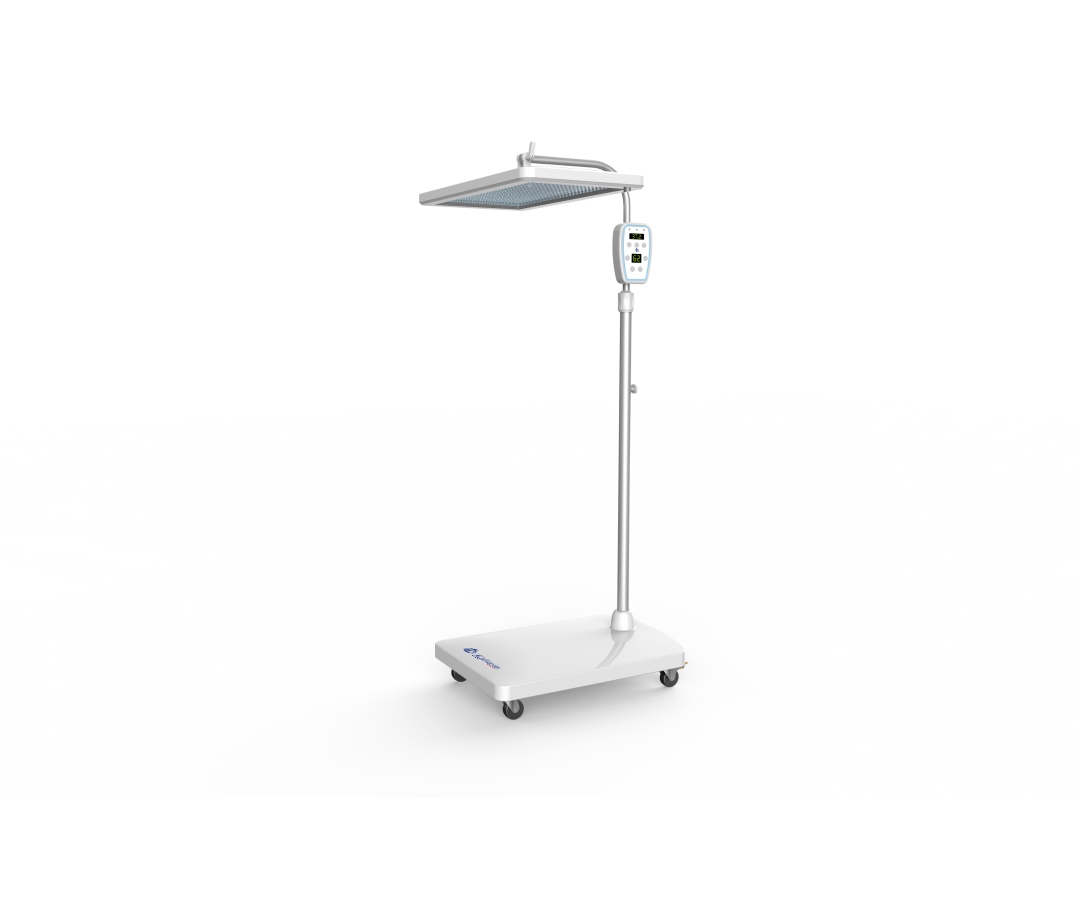Neonatal jaundice is a common condition, affecting approximately 60% of all term newborns and 80% of all preterm infants. This condition can cause serious damage to infants if not treated correctly, and can even be fatal. But thanks to technological and medical innovation, we now have an effective solution: the Bilirubin Phototherapy Unit.
Benefits of the Bilirubin Phototherapy Unit
The Bilirubin Phototherapy Unit has revolutionized the treatment of neonatal jaundice. Prior to its invention, the standard treatment was blood transfusion, a procedure that carries significant risks and complications. However, with the advent of bilirubin phototherapy, treatment is safer, noninvasive and highly effective.
The mechanism of action of this unit is simple but effective: it emits a blue light that is absorbed by the bilirubin in the neonate’s blood. This absorption changes the structure of bilirubin, allowing its elimination through urine and feces. In this way, toxic bilirubin levels can be reduced without resorting to invasive interventions. It is also important to highlight the innovative accessibility of this therapy. Some models can be easily moved in wheelchairs, allowing daily use in hospital and home environments.
Impact of the Bilirubin Phototherapy Unit on Neonatal Jaundice Treatment
The Bilirubin Phototherapy Unit has had an extraordinary impact on the treatment of neonatal jaundice. According to the World Health Organization, the use of this therapy has dramatically reduced the incidence of kernicterus, a serious complication of untreated neonatal jaundice.
The impact of this innovation is also reflected in its widespread adoption around the world. In fact, it is now the standard treatment for neonatal jaundice in many countries, including the United States, the United Kingdom, Canada, and Australia. And convenience is another attractive factor. Adapted for wheelchairs, it facilitates the transfer of the neonate, which contributes to a more integrated and efficient patient care service.
Bilirubin Phototherapy Unit: Future Opportunities and Challenges
However, despite the significant benefits and impact of the Bilirubin Phototherapy Unit, there are still challenges to be addressed. Converting phototherapy units into more compact and mobile devices, capable of being easily moved in wheelchairs, is one such challenge. This will allow phototherapeutic treatment in homes that do not have the necessary clinical infrastructure.
Furthermore, although bilirubin phototherapy is effective and safe, it is crucial to emphasize that careful and professional care during its use remains essential. The use of these units should always be under the supervision of trained medical personnel. The way neonatal jaundice is treated has changed. Its efficacy, safety and ease of wheelchair mobility make it an invaluable tool for neonatal care.
The future at Kalstein
Still, it remains crucial to pay attention to future challenges and always look for ways to further improve this vital therapy. The health and well-being of our children depend on it. At Kalstein as a manufacturing company and creators of a platform where you will not only find our products and the best international brands, if you want to buy any of our phototherapy units, visit us HERE, YR models designed in the best materials and using the latest technology innovating in quality and effectiveness at the best price.


